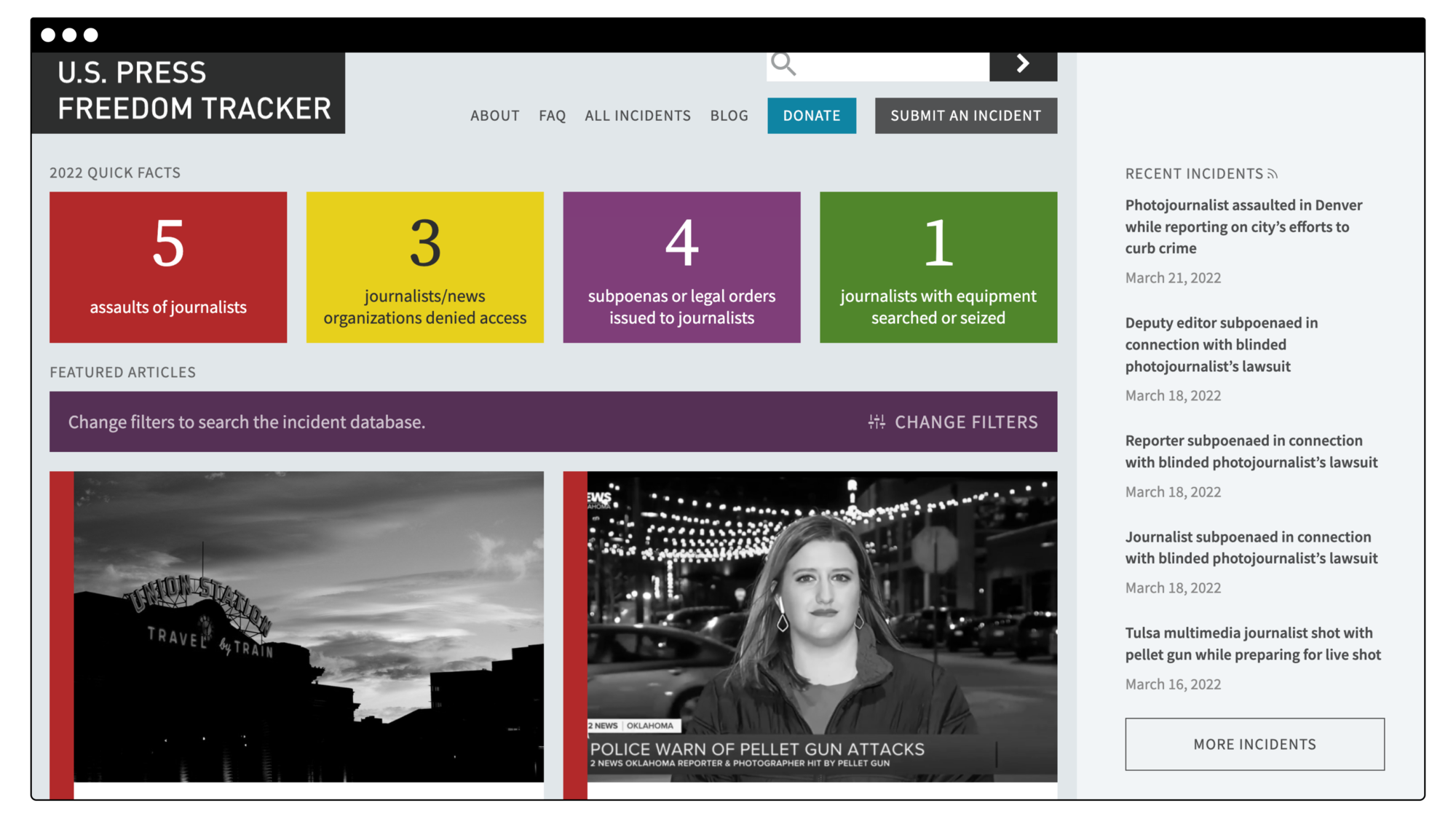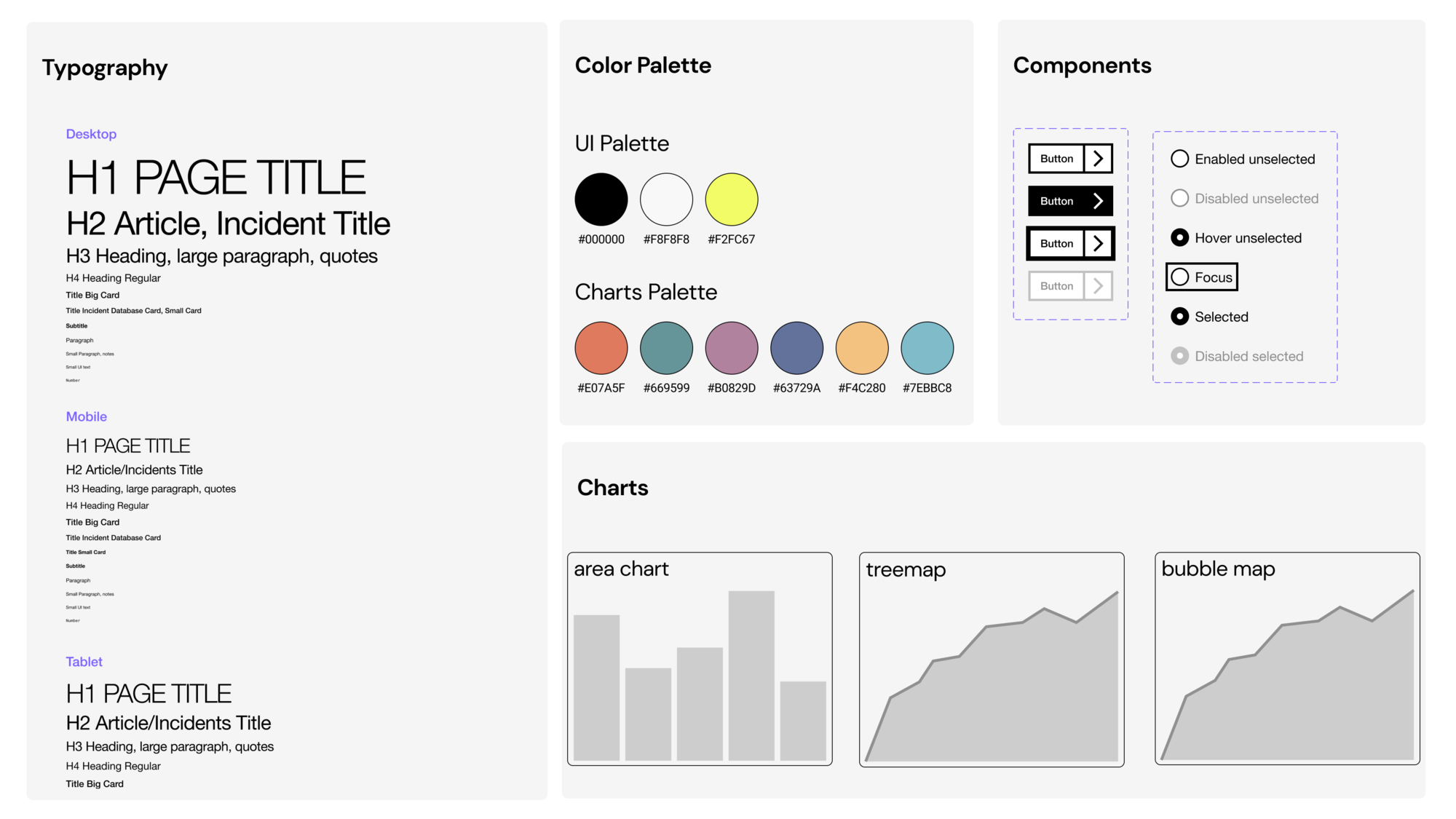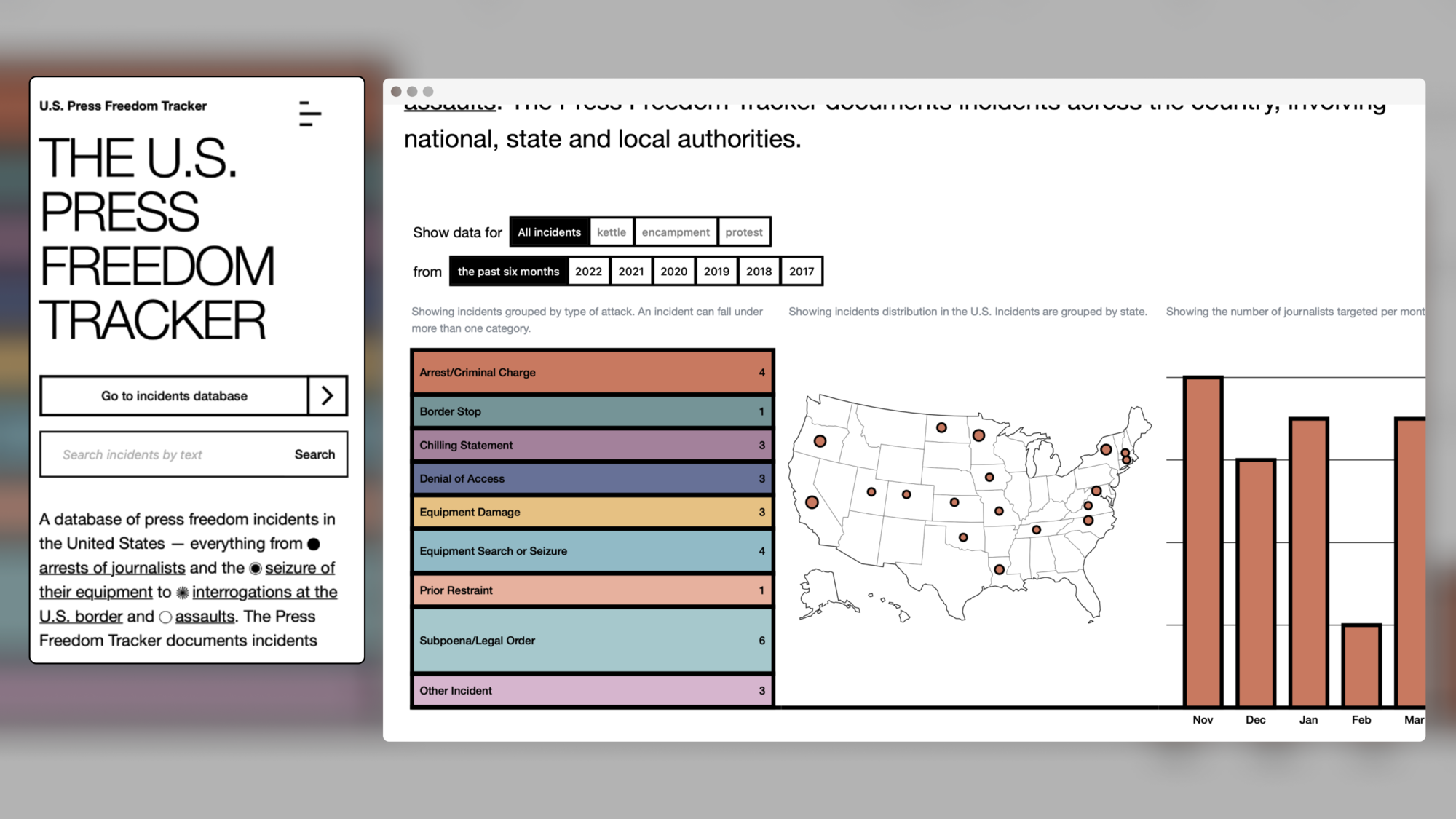Leveraging Data to Overhaul a Database
The U.S. Press Freedom Tracker (PFT) is the only website of its kind: a news source that systematically documents press freedom violations. In 2021, the swelling number of entries in the database necessitated a rebuild. When the organization contacted Accurat to reconstruct the website from the ground–up, we resolved to manage the complex, large–scale project with a methodology anchored by qualitative and quantitative research.



